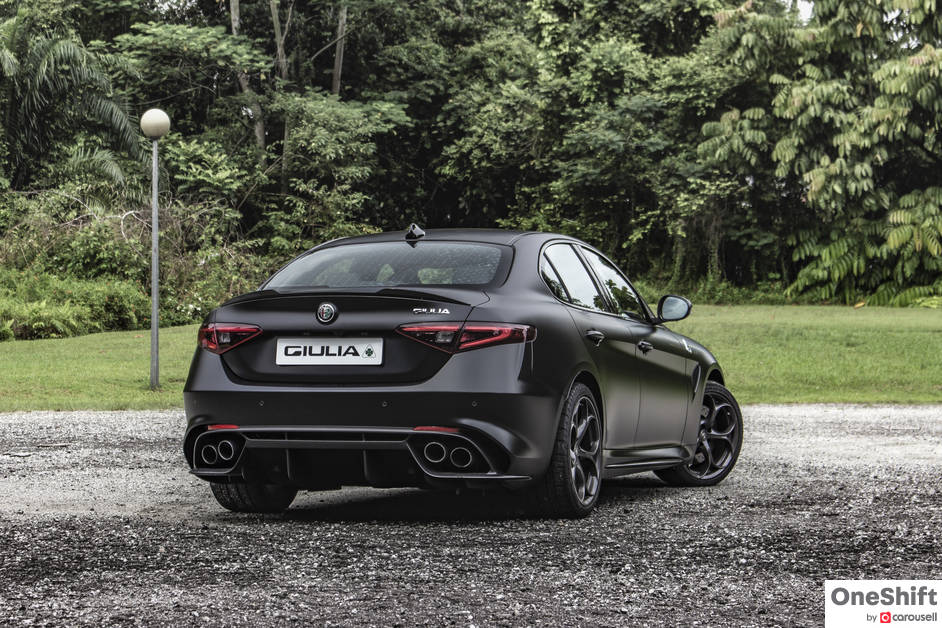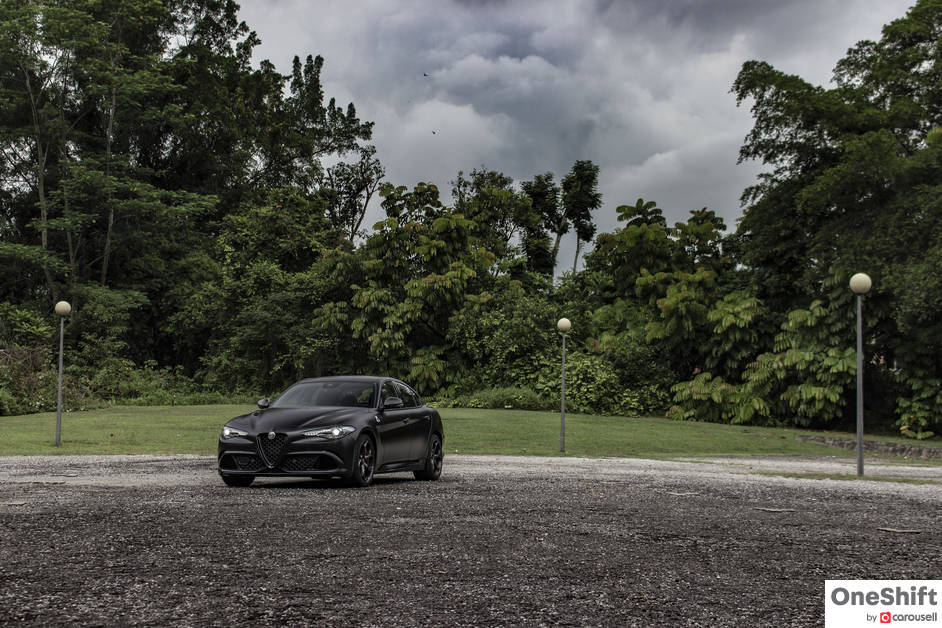Quadrifoglio Razzo
The last time Alfa Romeo fielded a North-south mounted engine with rear-drive in their everyday cars, was when they produced the 75; and it has been a while since the Italian manufacturer had gotten things right, by moving the driving wheels to the rear once again.


The last time Alfa Romeo fielded a North-south mounted engine with rear-drive in their everyday cars, was when they produced the 75; and it has been a while since the Italian manufacturer had gotten things right, by moving the driving wheels to the rear once again.
Two generations after the 75, Alfa has plenty to shout about. The then newly-minted 156 was interesting in its time, featuring their new Selespeed transmission. Well you see, most of the world then utilised either the trusty manual gearbox, or a slushy automatic, so it wasn’t difficult (in principle) to entice the customer…

In essence, the Selespeed was basically an automated manual transmission, which gave you the convenience of an automatic, yet allowed for manual up and downshifts, and still behaving like how a manual box should. So yes… it was heaps of fun to use, yet infamous for failure. The 159 which replaced the 156, saw an improvement in quality, while still rearing its Italian side.

Alfa Romeo has certainly taken their time in delivering their new range, beginning with their Giulia sedan, and followed by their first SUV, the Stelvio.
It is no secret that the Italian brand is firing salvos at the BMW 3 Series with the Giulia. Quality has been upped quite a good deal, and to that effect, so has refinement. I should stress that refinement seems a little new to the brand, which has always been seen as one which was constantly rough around the edges.

The Singaporean market gets three models, the mild-tuned Super, with 200hp; the Veloce, my favourite of the range, which delivers such a great balance of power, yet stays civilised. And there is the Quadrifoglio, where Alfa engineers (well actually they were Ferrari guys donning Alfa shirts for the day) had dropped in a Ferrari-derived F154 family engine into the front end… something which we will get to later.

With emphasis on 50:50 balance, and keeping weight down, the Quadrifoglio utilises aluminium and carbon fibre on their body panels. A carbon roof and bonnet lowers the car’s centre of gravity, while its hood and bootlid, both carbon reduces overall weight.
Aerodynamics has also been an important part of the deal when developing the QV. An Active Aero carbon splitter, located under the front bumper drops at speed, and works in tandem with the car’s flat-panelled undercarriage, and functional rear diffuser for improved airflow and downforce.

Our test car features Quadrifoglio style aluminium rims, with a staggered 245/35 R19 front and 285/30 R19 front-rear setup. Carbon ceramic brake rotors ensures that their sedan is able to decelerate from 100 - 0km/h in just 32 meters. You also get a choice of three colours for the caliper covers.
A driver-centric cockpit features a flat-bottomed steering wheel, which sports a Ferrari-style red engine start button. Behind the wheel, a pair of fixed Ferrari style paddle shifters, made of aluminium are within easy reach for swapping gears. A hooded pair of analogue dials peer from below the sweeping double-stitched upper section of the dash, to deliver information on speed readings on the right, and how much noise it makes on the left.

Carbon fibre fittings on the centre console and passenger side dash panel are constant reminders of the Quadrifoglio’s sporting intent, and we must say that the panels fit well together. There is however still some bits of cheap-feeling plastic switchgear. The Sanden-supplied air-conditioning unit works well, and has blowers to supply cooling top rear passengers.
The 8.8” screen is tiny by today’s standards, it is however sufficient to do the job of delivering data to the driver.

There is an 8-speaker sound system, and one USB port. It works...

Front bucket style seats are supportive, while rear seats, although shallower, have a good amount of depth to accommodate the average adult. The use of Alcantara is a great help in keeping you from sliding around on seat surfaces. The sloping rear door aperture however, might impede entry. Boot volume of 480 litres is decent for most users.
The 2.9 litre 90-degree bi-turbocharged aluminium V6 sits low and far-back in the engine bay, to help keep the car’s balance. The F154 family engine is derived from Ferrari’s current flat plane crank V8, found in the likes of their GTC4Lusso T. For the V6 a three-throw crank is utilised instead.

Power is rated at 510hp, while maximum torque of 600Nm, is available from 2,500-5,000rpm. Even with its force-fed nature, the Quadrifoglio, delivers its push a rather linear style, where it gets progressively responsive. On the run, it does at times, seem more like you’re driving a car with a NA engine. Drive is transferred to the rear wheels via an 8-speed ZF 8HP75 transmission.

Dialing it into “Race” mode, activates the overboost function (and turns off most of the car’s safety nets), for even more shove, while exhaust flaps open up; revealing the soulful chorus of its V6, punctuated with each lug of the shift pedal, creating a break in the engine’s burble. Gear changes are very fast, with cogs swapped in only 150 milliseconds.

Acceleration is blistering, with the 100km/h benchmark achieved in 3.9 seconds. The refined and heavier Audi RS4 Avant, which incidentally also boasts a 2.9 litre V6 does this in 4.1 seconds.
Snugly planted in the bucket seat, you can have a very clear sense when the rear end of the car just begins to step out around a bend. Steering feel is accurate, and responds well to adjustments made. Set the car up for a corner, and drop a gear, and you will even hear the engine rev-matching the transmission. Alfa Torque Vectoring utilises electronically controlled clutches, to help distribute power through both its carbon fibre drive shafts; this ensures that traction is delivered where it should go. Personally, I am not a fan of those static shifter pedals, especially around the bends.

The Alfa Active Suspension can also be activated with a push of a button, situated in the middle of the DNA knob, helping the car to adapt to different road and driving conditions.
In Eco mode, the engine benefits from Alfa Cylinders’ Efficient Management (CEM) deactivation system, which lets the engine function on just 3 cylinders; allowing the high-performance engine to deliver quite a decent 12.2km/l.

During city driving, the Giulia is well-behaved. The V6 does not suffer at low revs, making the QV variant a reasonable every day car.
Most cars in its class are built by German manufacturers, and therefore we would be skewed to certain expectations concerning build quality. However, the Giulia is not as well-built, but it is heaps of fun, and definitely a more emotional driving experience. Great for those who would like to try going just a little left-of-field.

Credits:







- Convenient and Hassle-Free
- Consumer Protection
Transparent Process
With No Obligation


Get the Best Price for your used car
from 500+ dealers in 24 hours








